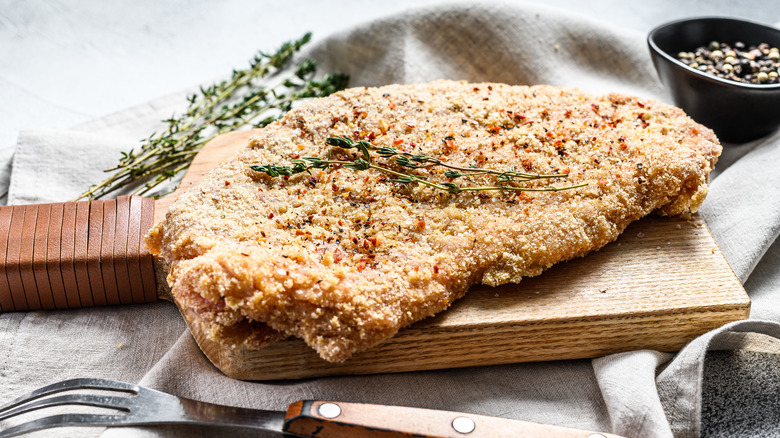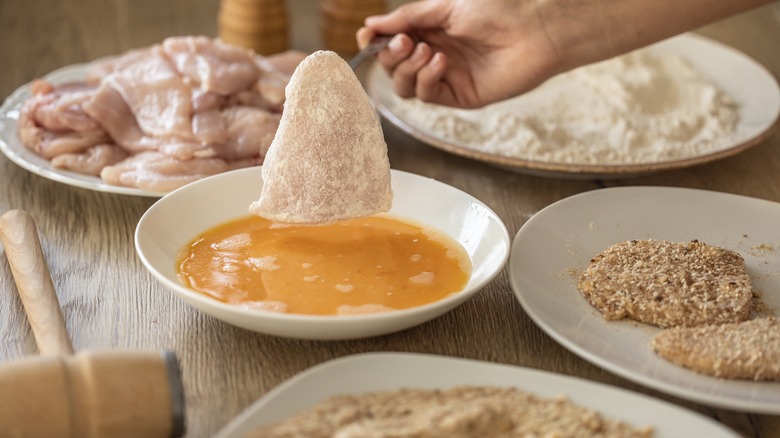The Best Cut Of Chicken To Use When Making Schnitzel
It's hard to beat a good schnitzel, be that the traditional veal wiener schnitzel, a meaty beef cutlet schnitzel, or a lighter chicken schnitzel. And if you've ever tried your hand at this Teutonic treasure, you know when it comes to crafting the perfect schnitzel, the choice of cut is crucial. For chicken schnitzel, this can be a tough decision. Why? I go hard for rich, juicy chicken thighs, but I have to admit, they just aren't the right cut for schnitzel.
Chicken breasts get a lot of flak for being bland, lean, and often dry. But those are really the offenses of the cook. For chicken schnitzel, a boneless, skinless breast offers a uniform shape and consistency, making it ideal for even cooking. Unlike other cuts — like those boneless thighs — that may have varying thicknesses or irregular shapes, chicken breast provides a consistent base for breading and pan-frying. This uniformity ensures that each schnitzel cooks at the same rate, resulting in a golden, crispy exterior while maintaining a juicy interior.
Further, the inherent characteristics of chicken breast also lend themselves to ease in breading your schnitzel. Its flat, boneless, skinless surface without excess fat allows for efficient dredging in flour, egg wash, and breadcrumbs, facilitating adherence and minimizing the risk of coating unevenness. This streamlined process not only saves time but also ensures a consistent coating that enhances the overall texture and flavor of the schnitzel.
Prepping the breast
To maximize the potential of chicken breast for schnitzel, preparation is key. While we've already pointed out that chicken breast has a near-ideal shape for schnitzel, that doesn't mean it doesn't need some coaxing to optimize cooking. One method involves pounding the chicken breast thin and even to achieve quick frying and a more uniform shape. Using a meat mallet or rolling pin, flatten the chicken breast to an even thickness between two sheets of plastic wrap, ensuring uniformity for consistent cooking.
As we all know, though, not all chicken breasts are created equal. Some are relatively small, while others are thick and almost hulking in their bulbous enormity. For the latter, pounding thin and even would render a schnitzel that would dwarf most common dinner plates and feed easily more than one diner. Particularly large chicken breasts can be sliced horizontally into two cutlets before pounding and frying. This technique not only aids in reducing cooking time but also ensures that each cutlet maintains an optimal thickness and ratio for schnitzel perfection.
Flavor and juiciness can also be vexing when working with chicken breasts, but a little extra time on the front end can help alleviate these problems. After pounding the chicken breast out, apply either a generous portion of salt or a salty rub and allow the chicken to rest uncovered in the fridge for a few hours. This will help the meat retain moisture, build flavor, and ultimately further dry the exterior for optimal breading.

